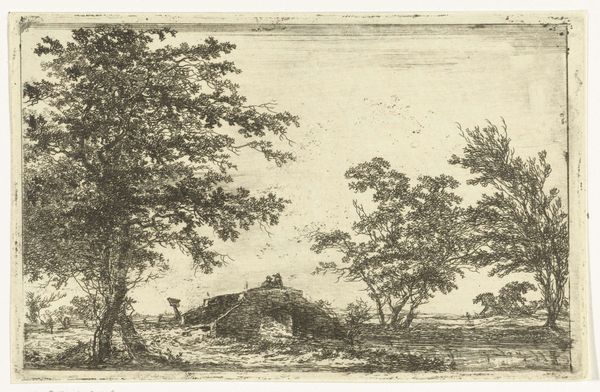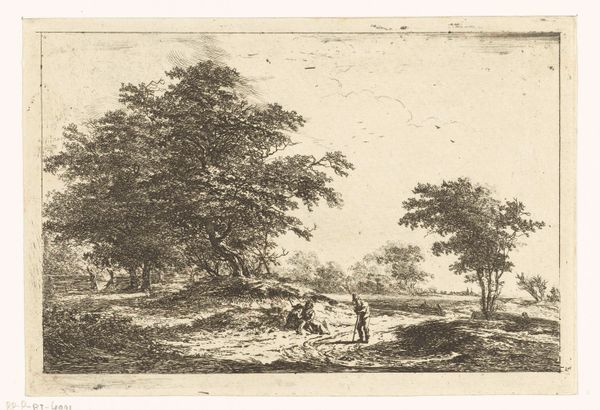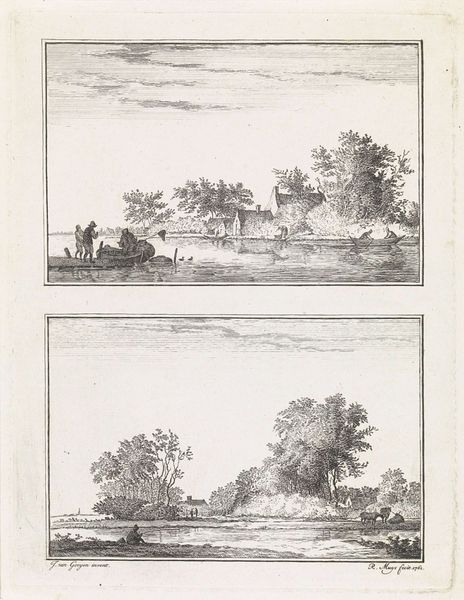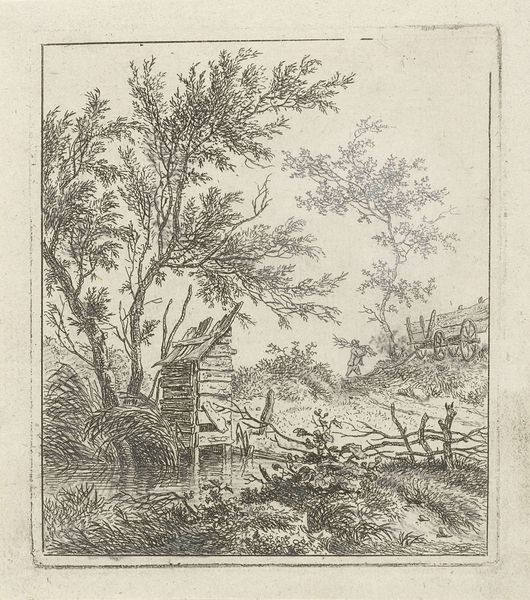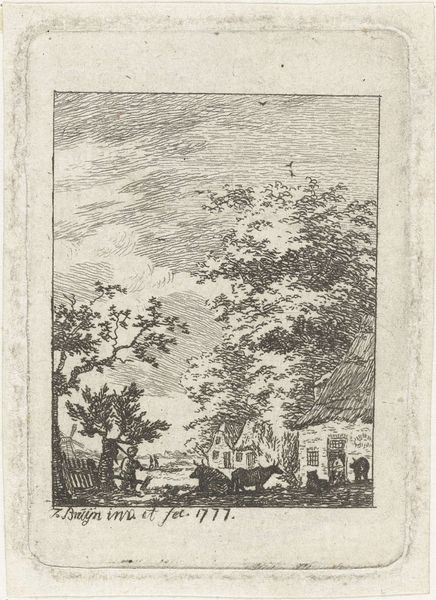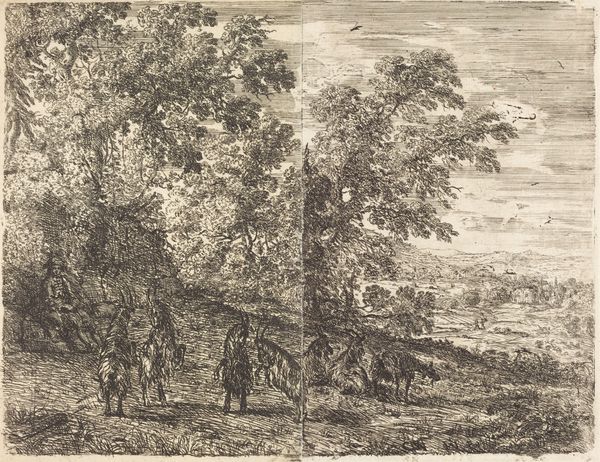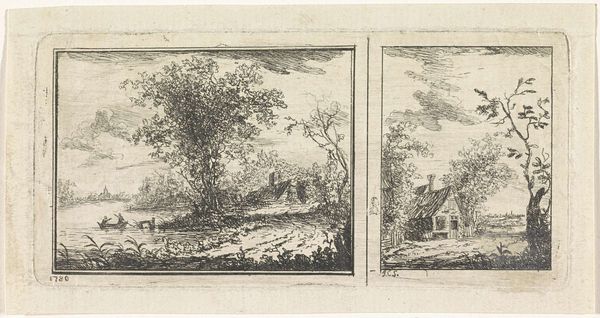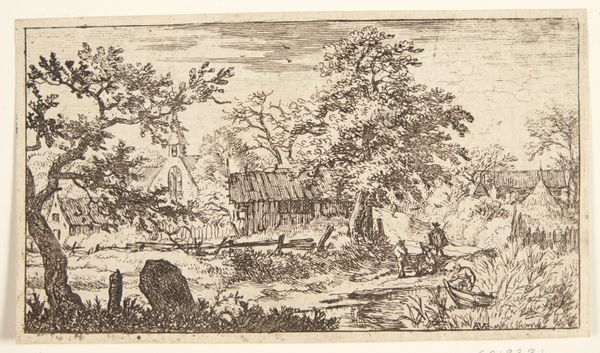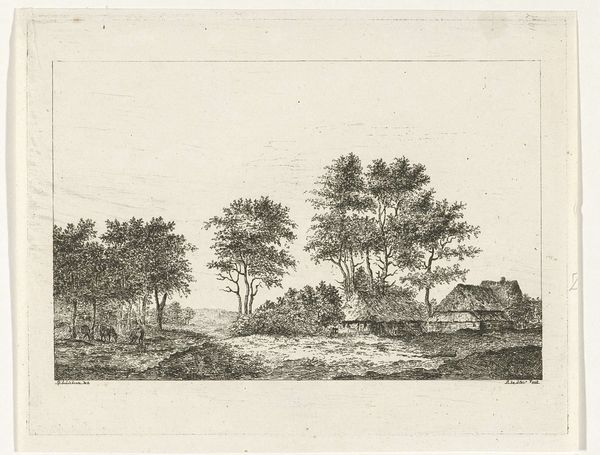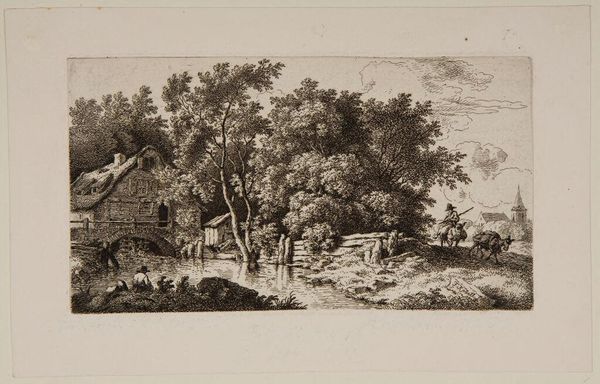
drawing, print, etching, paper
#
drawing
# print
#
etching
#
landscape
#
etching
#
paper
#
romanticism
Dimensions: height 260 mm, width 168 mm
Copyright: Rijks Museum: Open Domain
Curator: This work, entitled "Twee landschappen," which translates to "Two Landscapes," is an etching dating back to before 1815 and was created by Hermanus van Brussel. What strikes you first about this piece? Editor: Immediately, the word that comes to mind is "wistful." There's a distinct melancholy communicated through the detailed lines, like memories half-faded yet carefully preserved. It reminds me of the transient nature of rural life. Curator: I agree; the landscapes evoke a sense of yearning, a sentiment amplified by the historical context. Consider the backdrop against which this artwork was created – a time of significant social upheaval following the Napoleonic era and a resurging artistic embrace of Romanticism. Van Brussel wasn’t merely depicting scenery; he was capturing a specific Dutch relationship to the land, and perhaps an idealized view of peasant life amid real political shifts. Editor: The top landscape shows a rustic building nestled beside trees, conveying stability. In contrast, the lower scene focuses on figures and animals traveling through a forest path, reminding viewers of the symbolism of the traveler. Considering the era, it perhaps echoes a deeper yearning for certainty within change. The animals feel deeply pastoral. Curator: Precisely, we might even consider the implications of framing these rural scenes in the early 19th century, for it was a time marked by accelerating urbanization. Van Brussel seemingly situates "authentic" experience in the sphere of agriculture and the family home, even if reality held very different experiences. Editor: And note the specific details he chooses to render! Trees heavy with symbolism frequently embody concepts such as longevity and wisdom; the home traditionally represents domesticity, shelter, and even ancestry. Seeing both featured makes it so powerful! Curator: I find it remarkable how these symbols of domesticity can also elicit thoughts about land ownership, social class, and the precarious existence of rural laborers during a tumultuous period. Ultimately, what seems like an intimate scene actually invites discourse on more profound issues. Editor: Yes. This piece encapsulates a profound yet quiet discourse concerning tradition versus progress through poignant and powerful artistic symbolism. I hadn't quite seen that initially. Curator: I agree completely. A subtle yet stirring social commentary presented under the guise of pastoral scenes.
Comments
No comments
Be the first to comment and join the conversation on the ultimate creative platform.
